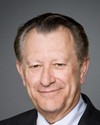To answer that question, some background is necessary, first of all, in that Statistics Canada is obviously a much larger organization. The census is a very large budget item. By comparison, FNSI is a very small organization with a very limited budget, so the chances of FNSI being involved in census-based work is very remote.
Our primary responsibility under our mandate, as I mentioned before, is to work with the other three institutions under the legislation, and with those first nations that have signed up under that legislation, to go forward.
In the larger sense, what we do after that is somewhat constrained by our budget. We have somewhat of an expansive mandate but limited resources to fill that mandate, so our approach would be to work with those who have the budget to do things like that, use their data, and then hopefully get information to first nations with the resources we have.
Again, this is something we would look at when we get to our full funding. We haven't yet reached that milestone, but when we do, those are the types of considerations we'll bring to the table.




